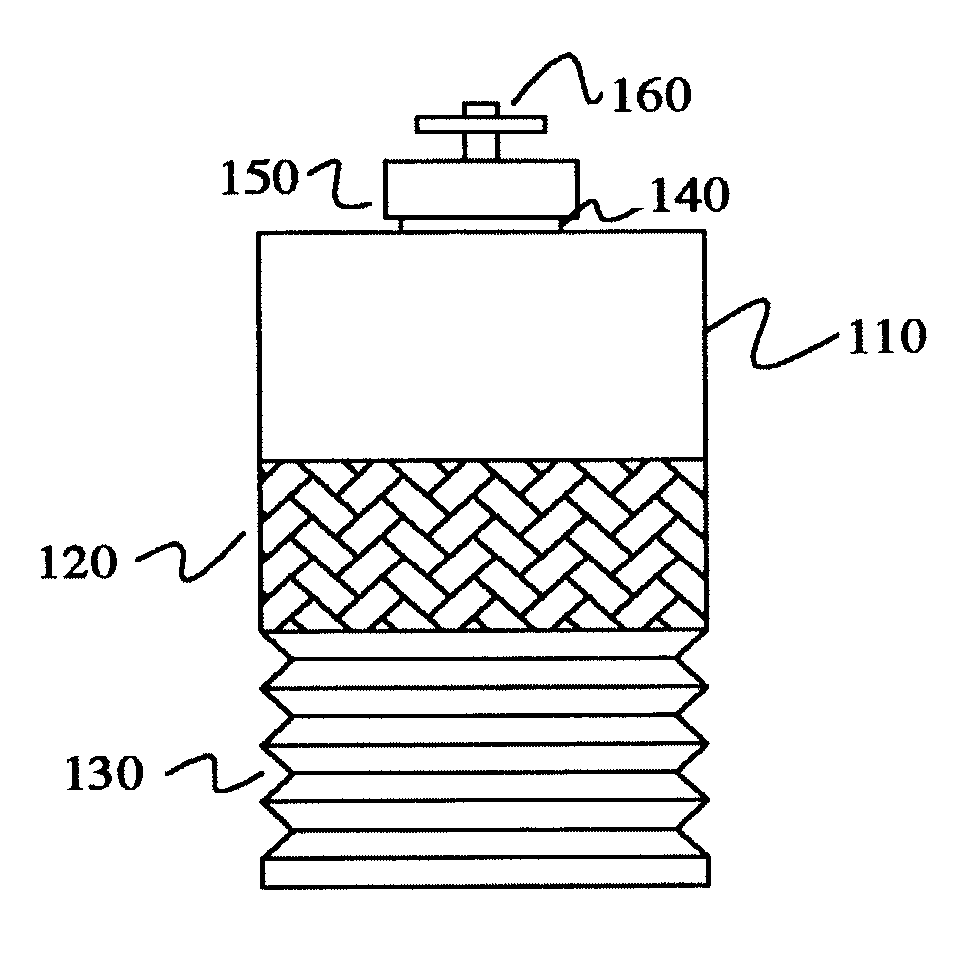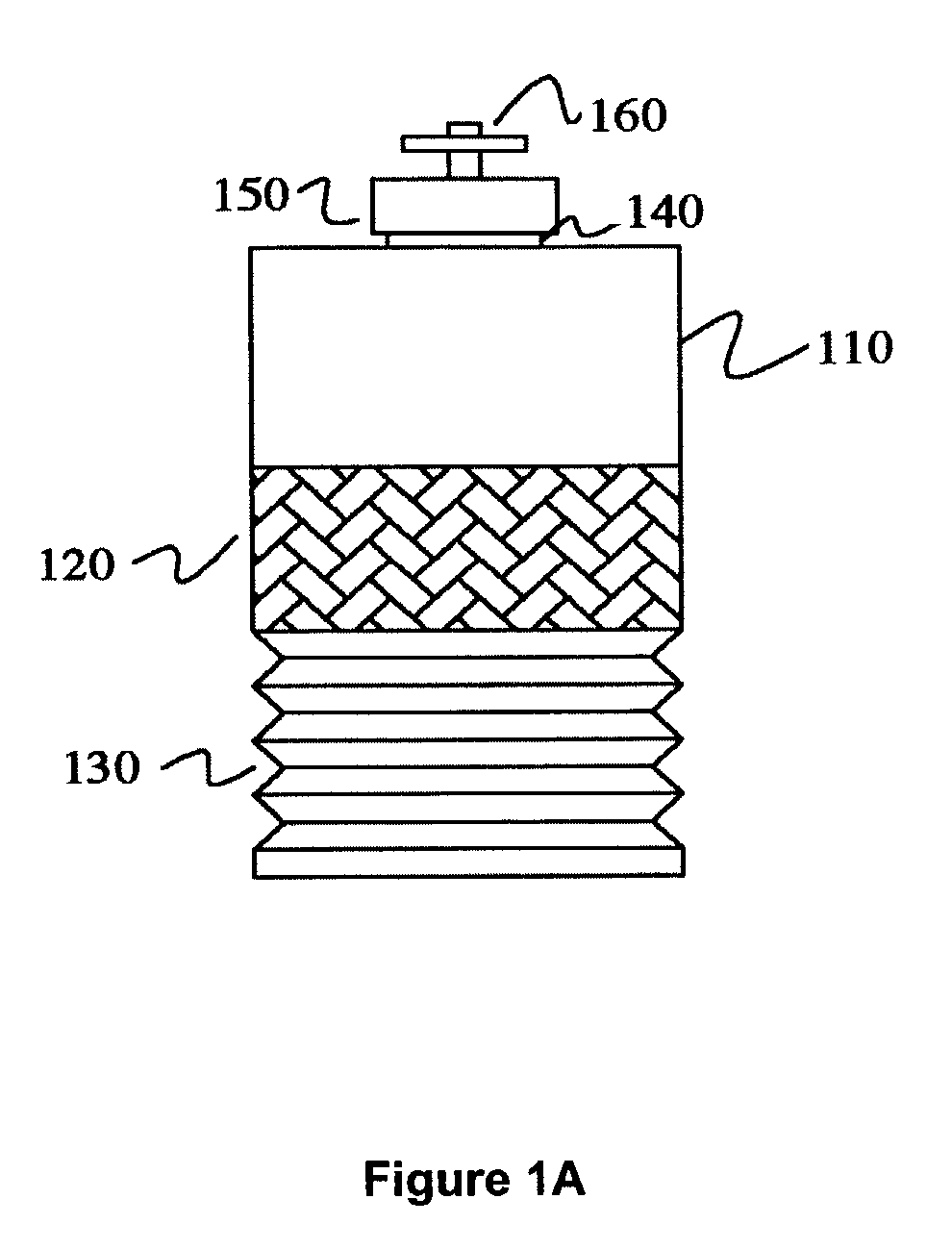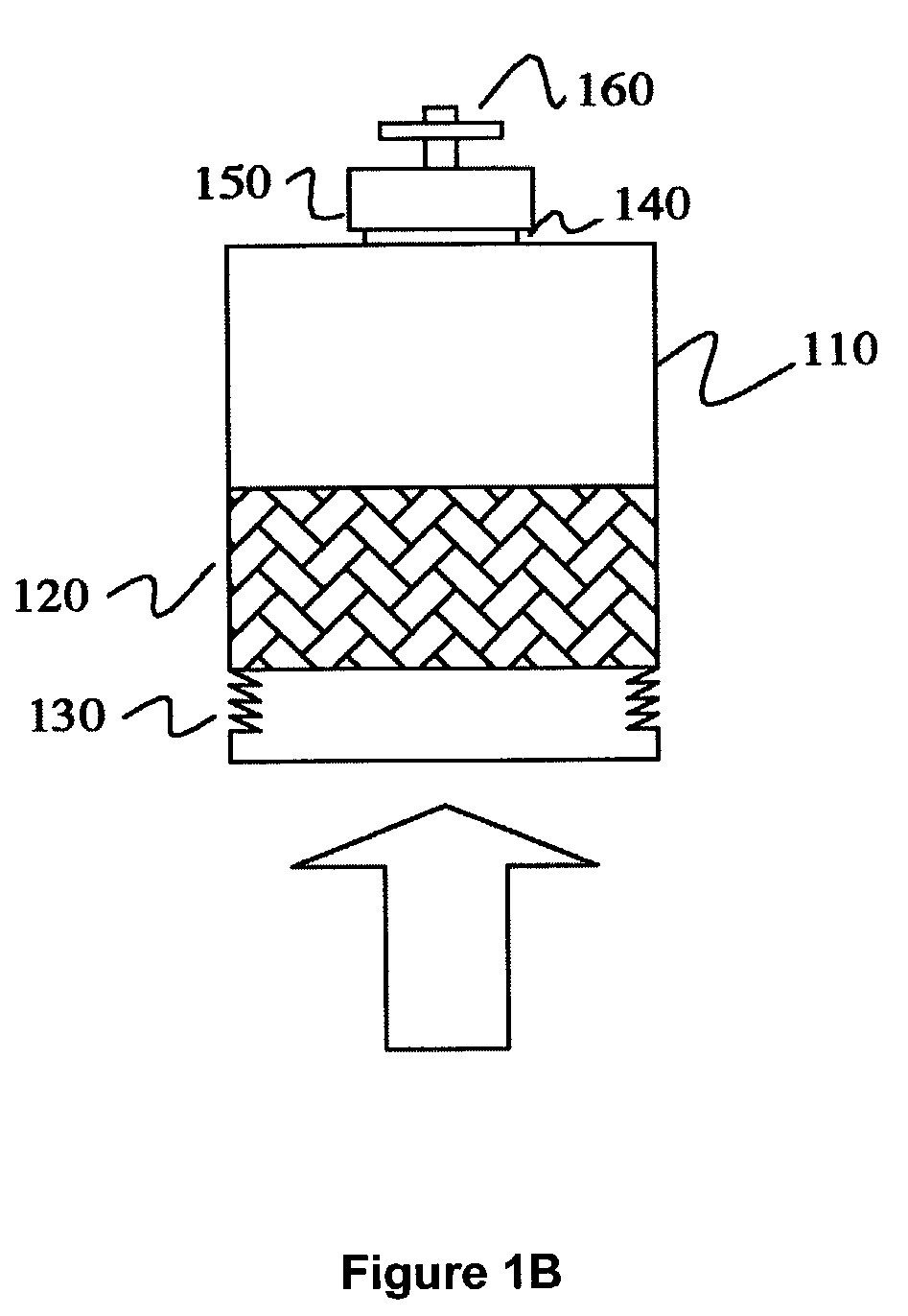In contrast, the techniques to culture cells such as eukaryotic cells, animal cells, mammalian cells and / or tissue are more difficult and complex since these cells are more delicate than microbial cells and have
nutrient and
oxygen requirements during growth which are more complex and difficult to maintain.
Further, animal cells and / or mammalian cells cannot withstand the excessive turbulence and / or shear forces that can be created by an influx of air or gaseous mixtures, such as a mixture containing oxygen,
nitrogen and
carbon dioxide, that are tolerated more easily by microbial cells.
In addition, no animal cells can be directly exposed to gases.
Animal cells and mammalian cells are more likely to be damaged by air and gas influx than are microbial cells and thus, result in increased
cell mortality.
Bioreactors for larger-scale culturing often have internal
moving parts, such as an
impeller, which subject the cells to a very high fluid shearing force causing
cell damage, sometimes cell death, thus leading to low viability of cultures and as a result reduces
protein and / or cell by-product production.
Likewise, bioreactors that utilize other types of mechanical parts, harsh
air movement, or abrupt fluid movement as a mechanism to achieve cell suspension and / or proper
aeration will likely cause damage to cells and hinder cell and tissue growth, which further leads to a decrease in cell by-product production, such a
protein.
Although the removable cover provides a convenient access to the culture, cells are often and easily contaminated by microorganisms as a result of repeatingly removing the cover during the culturing process.
In fact,
contamination is one of the principal challenges to successful cell and tissue culturing techniques.
Although culture flasks were an improvement over culture dishes, they did not fully remedy the
contamination problem.
In addition, neither the culture dish nor the culture flask can provide appropriate
aeration to cells.
Furthermore, the growth surface area available in culture flasks is not adequate, as in culture dishes, thus, placing limits on scaling-up the culturing process using this technology.
Although they offer some advantages over dishes and flasks, such as a larger surface area for cell attachment and growth, they are still unable to remedy all of the deficiencies and particularly with scaling up.
Collectively, these weaknesses include but are not limited to the large uncontrollable hydrodynamic shear forces associated with a gas headspace and the abundance of turbulent eddies.
As a result of the high
shear force environment inherent in roller bottles, tissue culturing of larger three-dimensional structures is virtually impossible.
Therefore, long-term maintenance of established cell lines can prove to be difficult with roller bottles due to the constant challenge of the high
shear force environment and possible
contamination.
Moreover, although the surface area of roller bottles is greater by comparison to culture flasks and dishes, it is often not considered adequate since the surface for
cell adhesion is not necessarily more favorable than the culture flasks and dishes, particularly for scaling up the growth of cell cultures.
However, a typical
roller bottle provides only a surface area of about 850–1700 cm2 for cultivating cells, a multitude of roller bottles are still required for scaling up production.
Although,
automation of culturing with a large plurality of roller bottles can save on time and labor investment, these operations are typically costly and limiting.
In addition to the problems of hydrodynamic shear forces and surface-area limitations, a central problem inherent in cell and tissue culturing techniques is attaining and maintaining sufficient
oxygenation in the growing culture.
However, these cells all require dissolved oxygen in the medium.
However, as discussed, both stirring and the sparging of gases can result in damaging cells, thereby decreasing the viability of the culture and the
overall efficiency and productivity of the cell and / or
tissue culture.
Further, direct sparging of cell and tissue cultures with gas can lead to foam production which, is also detrimental to cell viability.
Particularly, the rate at which oxygen can diffuse across the disk-shaped membrane is a significant limitation that restricts the size of the culture chamber.
Another
disadvantage of the flat disk membrane is that it is designed to flex in order to cause mixing within the culture chamber which can result in cell death.
The
mixing effect is a feature described as being critical for the distribution of air throughout the culture media, however, it will also tend to create shear forces within the chamber, again can be detrimental to cells, consequently providing sufficient
gas exchange to sustain the growth of larger cellular structures is a significant and realistic restriction when designing a
bioreactor or
culture vessel.
However, Schwarz discloses that the range of sizes for the vessel is still limited since
gas exchange is dependent on the quantity of gas permeable surface area.
Such size limitations are not suitable for growing three-dimensional cellular aggregates and tissues and / or any scaling up production.
The Falkenberg vessel, however, is not designed to minimize turbulence within the
cell culture chamber but rather, mixing is recited to be an essential step to keep the
dialysis membrane wetted.
Further, Falkenberg does not contemplate using the vessel to grow cellular aggregates or tissues of any kind.
Introduction of contaminants is very likely given the complexity and the reliance of the components for the Liau apparatus which are external to the culture chamber, for example, the external tubings, storage tanks, and pumps.
Further, sterilization is difficult and laborious due to a relatively large amount of components to the apparatus and the size of apparatus.
Another problem presented by Liau is that the flow of the culture medium through the
system would create hydrodynamic shear forces that can easily disrupt and dislodge cells from the substrate plates, thus, reducing the viability of the cells.
Furthermore, the vertical substrate plates also discourage
cell adhesion since cells that cannot adhere immediately to the plates will simply fall and accumulate at the bottom of the plates and, eventually, most of these cells die.
Thus, the culture has a reduced viability, the
protein production decreases correspondingly and the
system would require continual restarting which is highly inefficient and counterproductive.
Moreover, due to the complexity of the system, the harvesting of any secreted protein or cellular product would be cumbersome and
time consuming.
Lastly, when the
growth medium is lowered with respect to the growth substrate plates, the cells become exposed to air, i.e., gaseous environment directly, and thus, may result in cell death.
 Login to View More
Login to View More 


